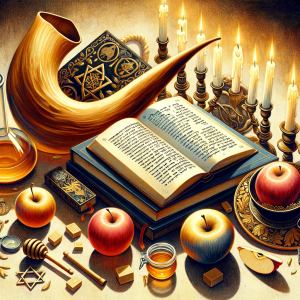Biblical Feasts and Holy Days (4of8)

Lesson 8: Rosh Hashanah and Yom Kippur
Title: “Days of Awe: Rosh Hashanah and Yom Kippur”
Introduction: A thorough exploration of Rosh Hashanah and Yom Kippur, focusing on their themes, observances, and spiritual implications.
Discussion Points and Possible Answers:
- Themes:
- Rosh Hashanah: Marking the Jewish New Year, it’s a time for reflection, judgment, and the sounding of the shofar.
- Yom Kippur: The Day of Atonement, focusing on atonement, reconciliation, and fasting.
- Observances:
- Rosh Hashanah: Customary to hear the shofar blown, symbolizing a call to repentance.
- Yom Kippur: Characterized by a 25-hour fast, intensive prayer, and seeking forgiveness.
- Prophetic Significance in Christian Thought:
- Divine Judgment and Redemption: Seen as symbolic of God’s final judgment and redemption.
- The Final Trumpet: Some interpretations relate the shofar’s sound to the final trumpet in eschatological events.
Summary: An understanding of these High Holy Days as critical for introspection, repentance, and spiritual renewal.
Biblical Story: The commandment to observe the Day of Atonement (Leviticus 16).
Related References:
- Leviticus 23:23-32: Biblical instructions for observing these holy days.
- Hebrews 9-10: New Testament reflections on atonement.
- “The Book of Life: A Personal and Ethical Guide to the High Holy Days” by Rabbi Lawrence A. Hoffman: Offers insights into the meaning and observance of these days.
Conclusion: Highlighting the spiritual significance of Rosh Hashanah and Yom Kippur in fostering self-examination and spiritual growth.

